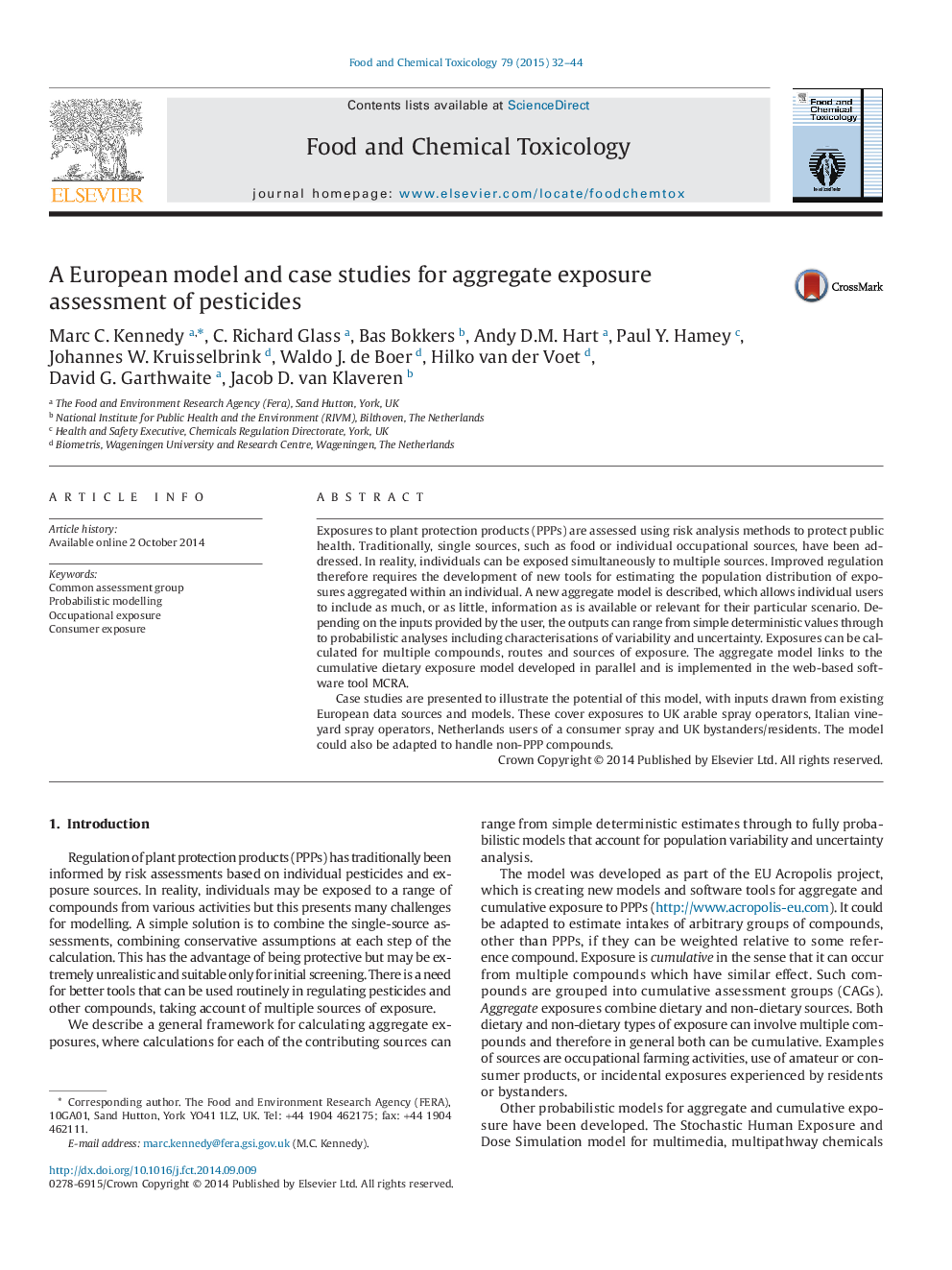| Article ID | Journal | Published Year | Pages | File Type |
|---|---|---|---|---|
| 2584928 | Food and Chemical Toxicology | 2015 | 13 Pages |
•A flexible framework is presented to calculate aggregate pesticide exposure.•Dietary and non-dietary sources can be included from multiple routes and chemicals.•The model is implemented within web-based software.•Seven case studies are presented from three EU countries and existing models/data.•The examples include a combination of operator, bystander and consumer activities.
Exposures to plant protection products (PPPs) are assessed using risk analysis methods to protect public health. Traditionally, single sources, such as food or individual occupational sources, have been addressed. In reality, individuals can be exposed simultaneously to multiple sources. Improved regulation therefore requires the development of new tools for estimating the population distribution of exposures aggregated within an individual. A new aggregate model is described, which allows individual users to include as much, or as little, information as is available or relevant for their particular scenario. Depending on the inputs provided by the user, the outputs can range from simple deterministic values through to probabilistic analyses including characterisations of variability and uncertainty. Exposures can be calculated for multiple compounds, routes and sources of exposure. The aggregate model links to the cumulative dietary exposure model developed in parallel and is implemented in the web-based software tool MCRA.Case studies are presented to illustrate the potential of this model, with inputs drawn from existing European data sources and models. These cover exposures to UK arable spray operators, Italian vineyard spray operators, Netherlands users of a consumer spray and UK bystanders/residents. The model could also be adapted to handle non-PPP compounds.
